Effects of Injection Timing and Injection Volume on the Combustion and Emissions of a Two-Stroke Kerosene Direct Injection Engine
Abstract
:1. Introduction
2. Numerical Modeling of the Cylinder Working Process of a Two-Stroke Kerosene Direct Injection Engine
2.1. Ignition and Combustion Model
2.2. Nitrogen Oxide and Soot Models
2.2.1. Nitrogen Oxide Generation Model
2.2.2. Soot Generation Model
2.3. Numerical Calculation Method
3. Test Equipment
3.1. Combustion System
3.2. Experimental Prototype
3.3. Validation of Numerical Calculation Model
4. Effect of Injection Time on Combustion and Emission
4.1. Effect of Injection End Angle on Combustion Characteristics
4.2. Effect of Injection End Angle on Temperature Field Distribution
4.3. Effect of the Injection End Angle on the Concentration of Each Emission Component
5. Effect of Fuel Injection Volume on Combustion and Emission
5.1. Effect of Fuel Injection Volume on Combustion Characteristics in a Cylinder
5.2. Effect of the Fuel Injection Volume on the Concentration of Each Emission Component
6. Conclusions
- (1)
- The injection volume was set at 8.5 mg, and the injection end angle was set at 50–70° BTDC.
- ➀
- When the injection end angle gradually increased from 50 to 70° BTDC, the average pressure and temperature rapidly increased in the course of 335 °CA~350 °CA, while the peak pressure, temperature, and accumulated heat release gradually increased. After the piston reached 350 °CA, the combustion in the cylinder advanced more toward completion, and the area of the combustible zone in the cylinder was the largest near the completion of combustion.
- ➁
- The mass fraction of CO and soot decreased when the injection end angle increased from 50° to 70° BTDC. The mass fractions of CO2 and NO slightly increased, and CO and soot emissions were minimized at an injection end angle of 70° BTDC.
- (2)
- The injection end angle was set to 50° BTDC, and the injection volume was set to 7.5 mg, 8 mg, and 8.5 mg.
- ➀
- With a gradual increase in injection volume, the average pressure and temperature in the cylinder first increased and then decreased; these parameters rapidly increased at 345~360 °CA and gradually increased at peak value. When the fuel injection volume changed from 7.5 mg to 8.5 mg, the corresponding moment when the heat release rate and the accumulated heat release sharply increased was advanced, the peak value gradually increased, and the combustion advanced more toward completion.
- ➁
- As the injection volume increased, the quantities of CO, NO, and soot gradually increased, and that of CO2 slightly decreased.
- (3)
- For a two-stroke kerosene direct injection engine, it is recommended to set the injection end angle to 50° BTDC and the fuel injection quantity to 7.5 mg considering the effects on pollutant emissions and combustion.
Author Contributions
Funding
Institutional Review Board Statement
Informed Consent Statement
Data Availability Statement
Conflicts of Interest
References
- Wu, H.; Zhang, F.; Zhang, Z. Fundamental spray characteristics of air-assisted injection system using aviation kerosene. Fuel 2021, 286, 119420. [Google Scholar] [CrossRef]
- Miao, J.; Fan, Y.; Wu, W. Characteristics of flash boiling spray of aviation kerosene in the twin-orifice nozzle. Fuel 2021, 297, 120771. [Google Scholar] [CrossRef]
- Ma, H.; Xie, M.; Zeng, W.; Chen, B. Experimental study on combustion characteristics of Chinese RP-3 kerosene. Chin. J. Aeronaut. 2016, 29, 375–385. [Google Scholar] [CrossRef]
- Garg, P.; Sharma, A.; Agarwal, D.K.; Varma, M. Numerical modeling of liquid oxygen and kerosene combustion at high pressures. In Proceedings of the 55th AIAA Aerospace Sciences Meeting, Grapevine, TX, USA, 9–13 January 2017. [Google Scholar] [CrossRef]
- Wu, H.; Dong, X.; Shi, Z.; Li, H.; Cao, W.; Zhang, L.; Bo, Y.; Li, X. Effect of injection timing on knock combustion and pollutant emission of heavy-duty diesel engines at low temperatures. Chemosphere 2022, 305, 135519. [Google Scholar] [CrossRef] [PubMed]
- Hu, C.; Gu, J.; Zhou, H. Combustion characte- ristics of piston aero direct injection engine. J. Aeronaut. Dyn. 2015, 30, 2368–2375. [Google Scholar] [CrossRef]
- Lu, Y.; Su, W.; Pei, Y. Effect of injection parameters on premixed combustion and emission of diesel engine. J. Intern. Combust. Engines 2016, 34, 9–15. [Google Scholar] [CrossRef]
- Ning, L.; Duan, Q.; Wei, Y.; Zhang, X.; Yu, K.; Yang, B.; Zeng, K. Effects of injection timing and compression ratio on the combustion performance and emissions of a two-stroke DISI engine fuelled with aviation kerosene. Appl. Therm. Eng. 2019, 161, 114124. [Google Scholar] [CrossRef]
- Su, Y.; Wang, B.; Liu, Y.; Xie, F.; Hu, Y.; Duan, Q. Effects of diesel injection time and gasoline ratio on emission performance of homogeneous mixture ignition mode. J. Jilin Univ. 2022, 52, 37–45. [Google Scholar] [CrossRef]
- Gu, W.; Yang, Y.; Cai, X.; Chen, D. Multi- dimensional numerical simulation of in cylinder flow field of FAI two-stroke direct injection gasoline engine. J. Intern. Combust. Engines 2007, 25, 150–156. [Google Scholar] [CrossRef]
- Jiang, S.; Hua, W.; Jianping, J.; Hong, L. Numerical simulation of in cylinder concentration field of direct injection gasoline engine. Intern. Combust. Engine Eng. 2010, 31, 65–68. [Google Scholar] [CrossRef]
- Wei, C. Influences of Ignition Advance Angle on GDI Engine Particulate Emission. J. Vehicle Engine 2014, 3, 25–28. [Google Scholar] [CrossRef]
- Taamallah, S.; Shanbhogue, S.J.; Ghoniem, A.F. Turbulent flame stabilization modes in premixed swirl combustion: Physical mechanism and Karlovitz number-based criterion. Combust. Flame 2016, 166, 19–33. [Google Scholar] [CrossRef]
- Hélie, J.; Trouvé, A. A modified coherent flame model to describe turbulent flame propagation in mixtures with variable composition. Proc. Combust. Inst. 2000, 28, 193–201. [Google Scholar] [CrossRef]
- Tang, J.; Zhu, G.G.; Men, Y. Review of engine control-oriented combustion models. Int. J. Engine Res. 2022, 23, 347–368. [Google Scholar] [CrossRef]
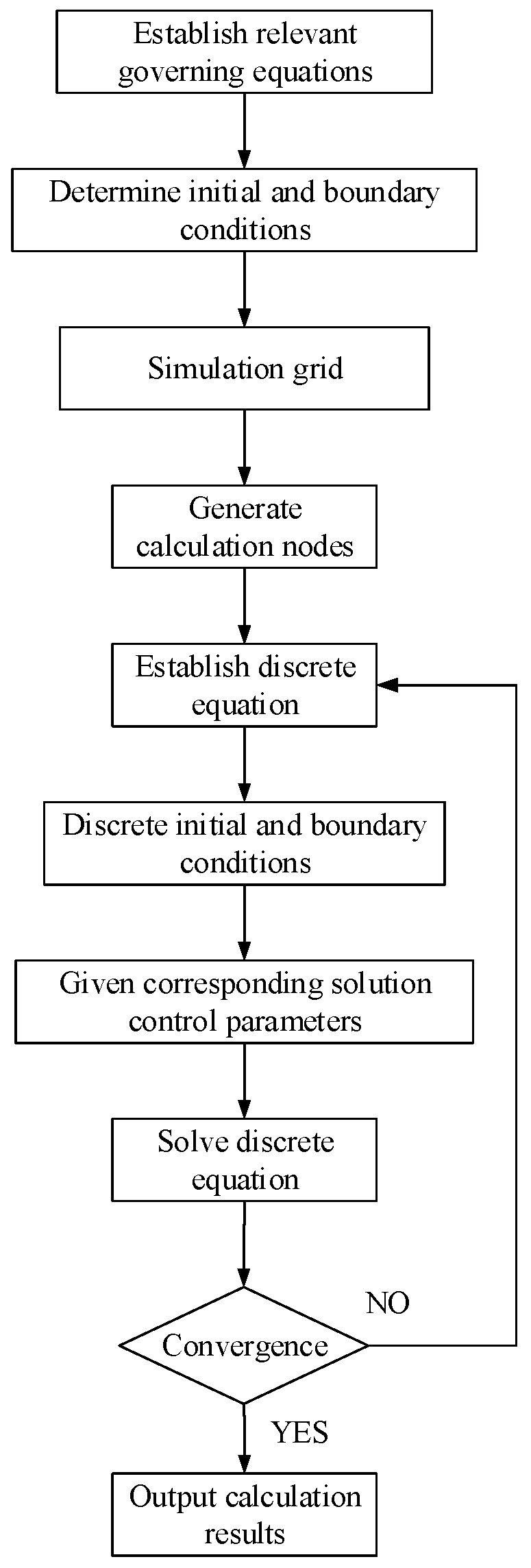
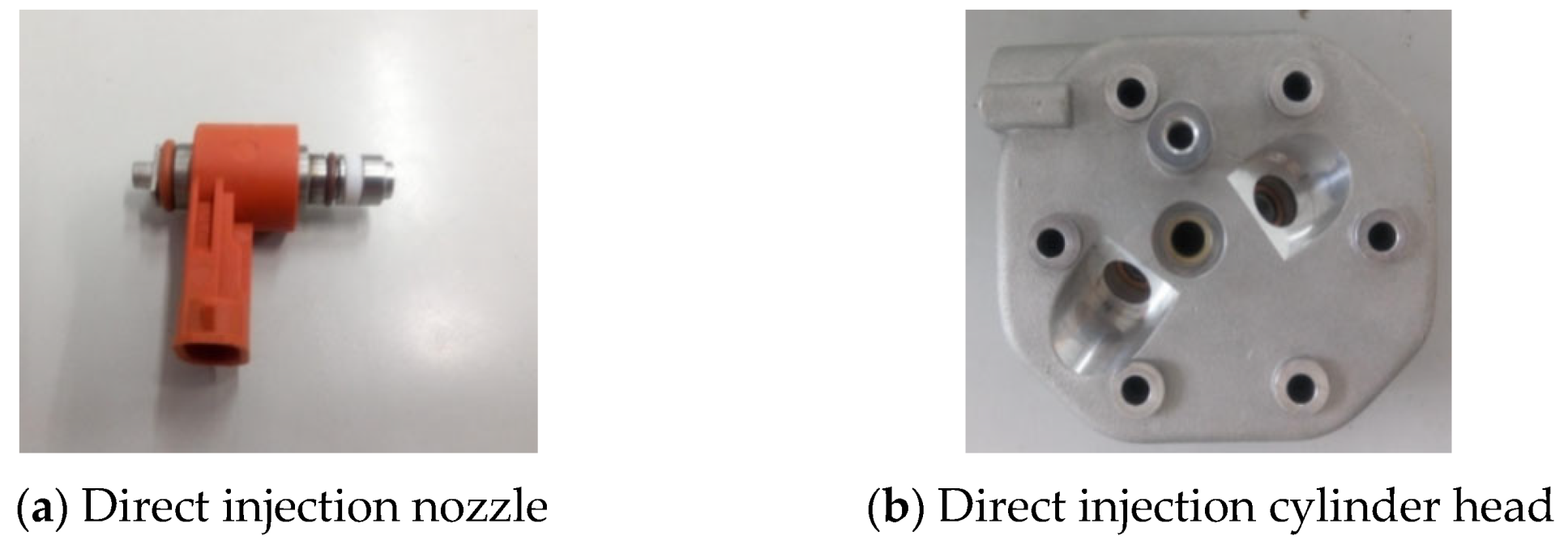
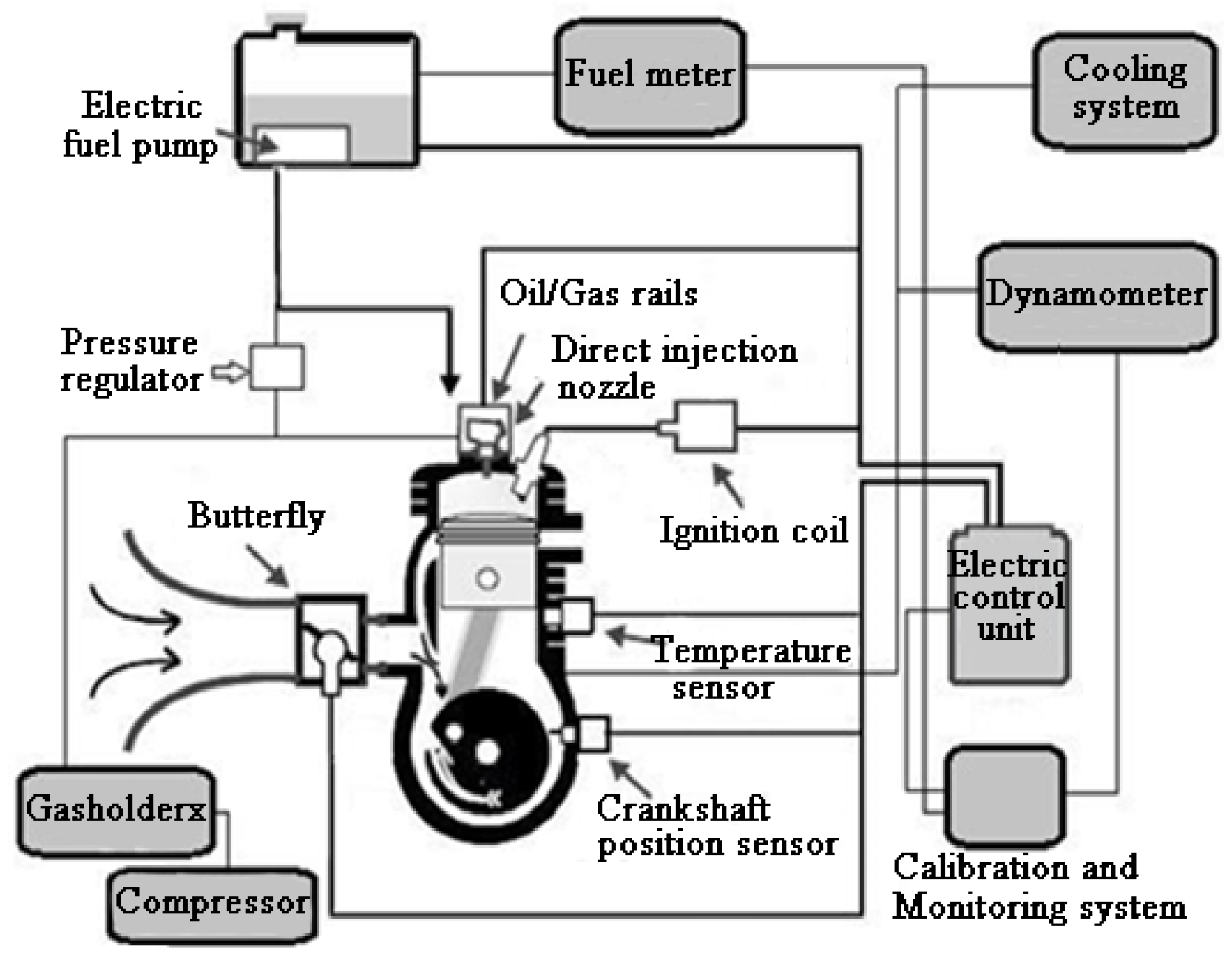

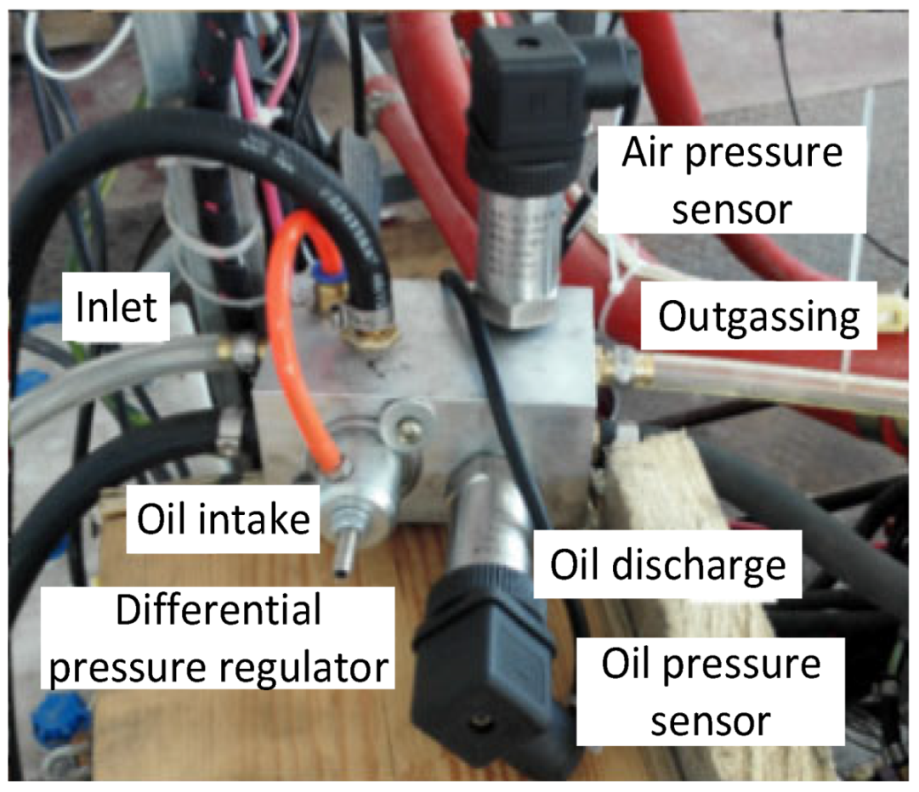
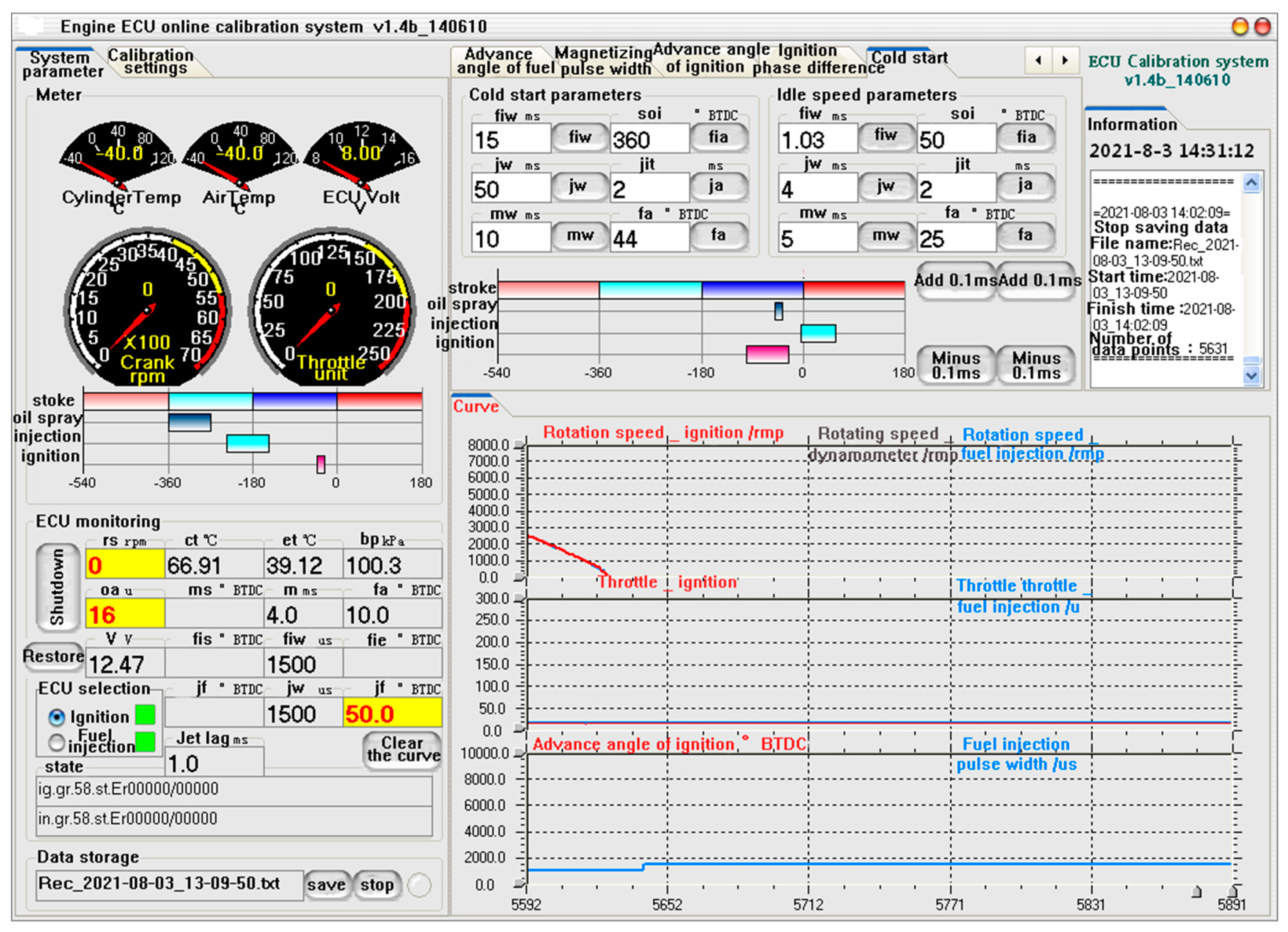
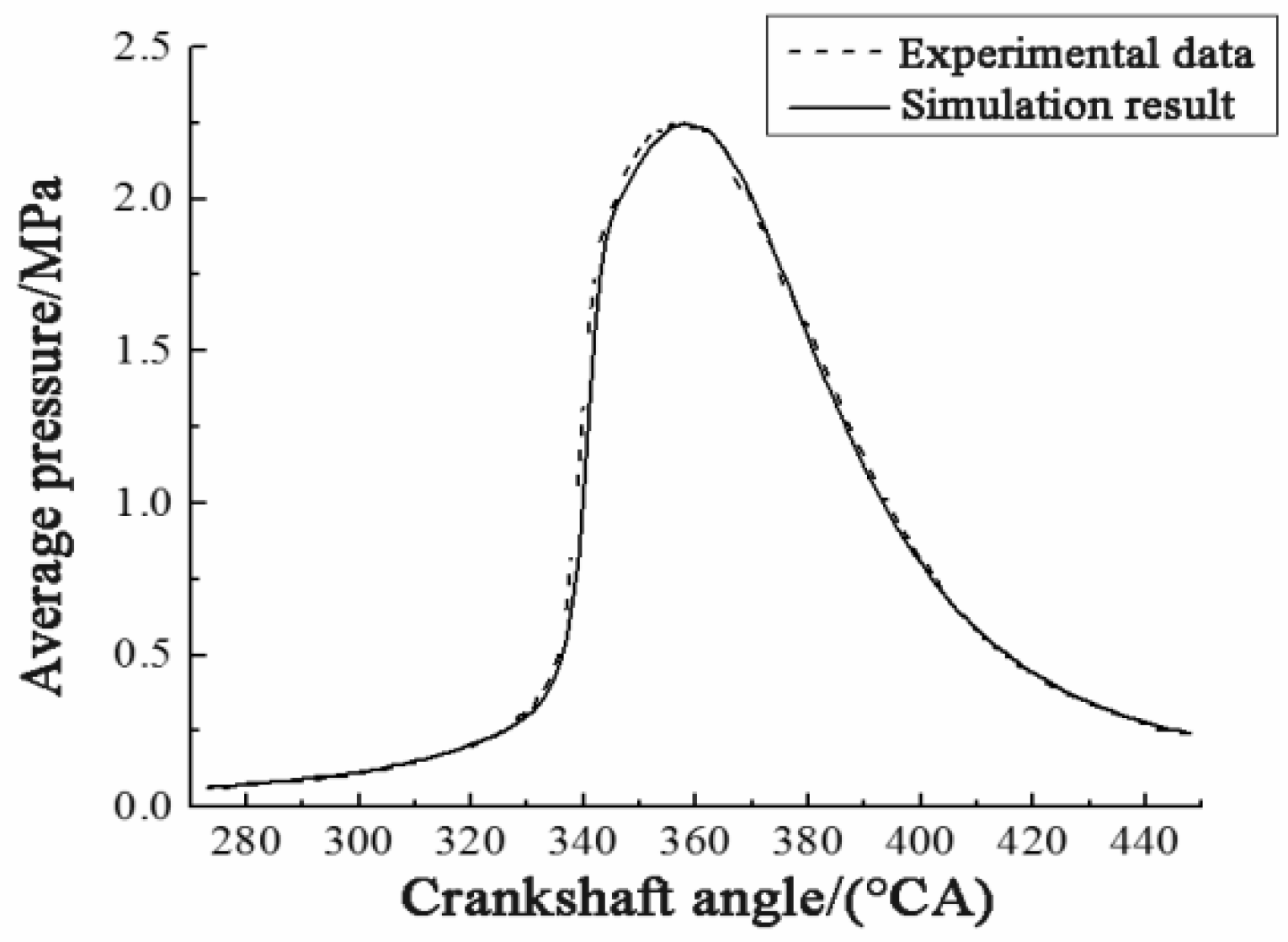
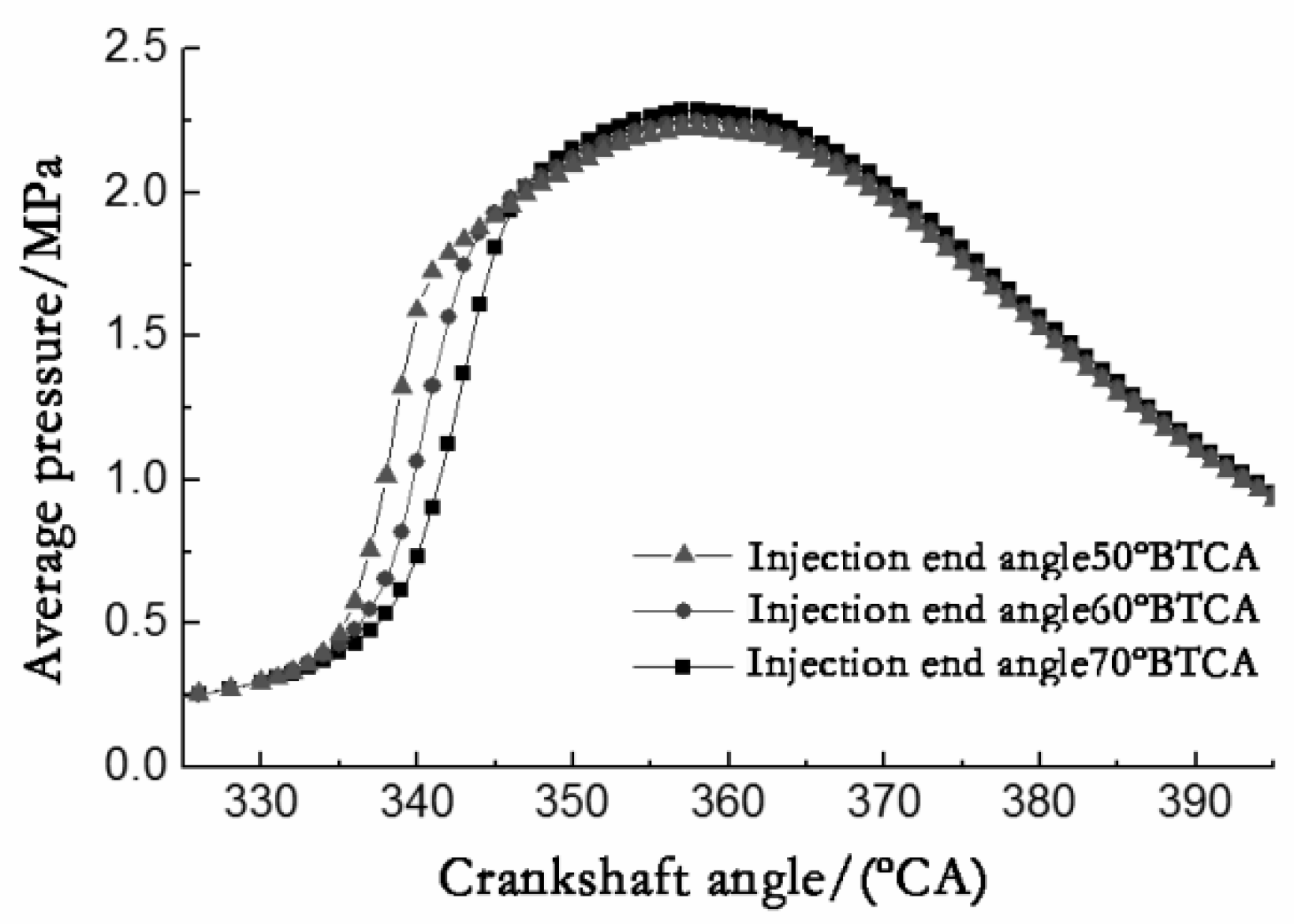
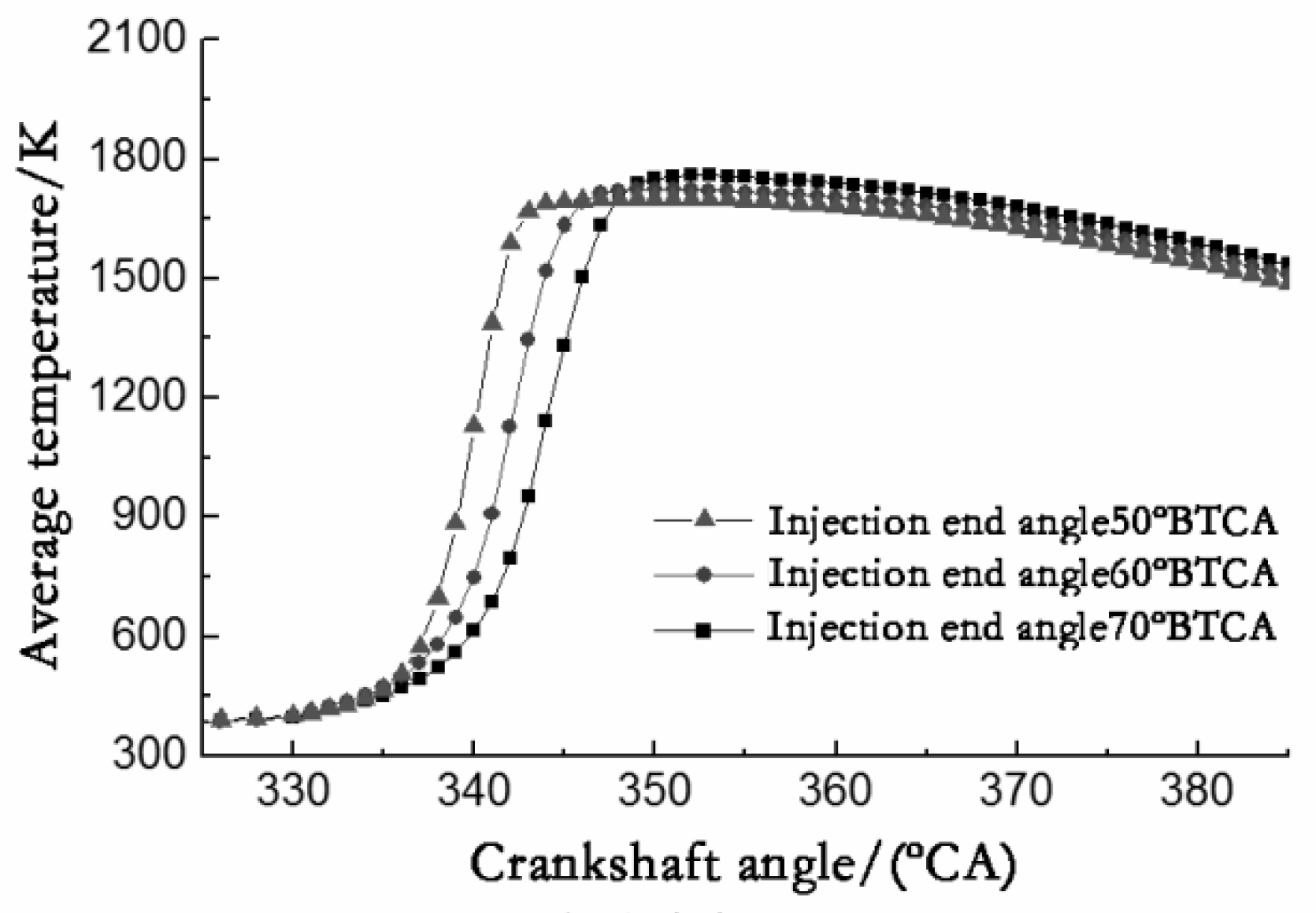

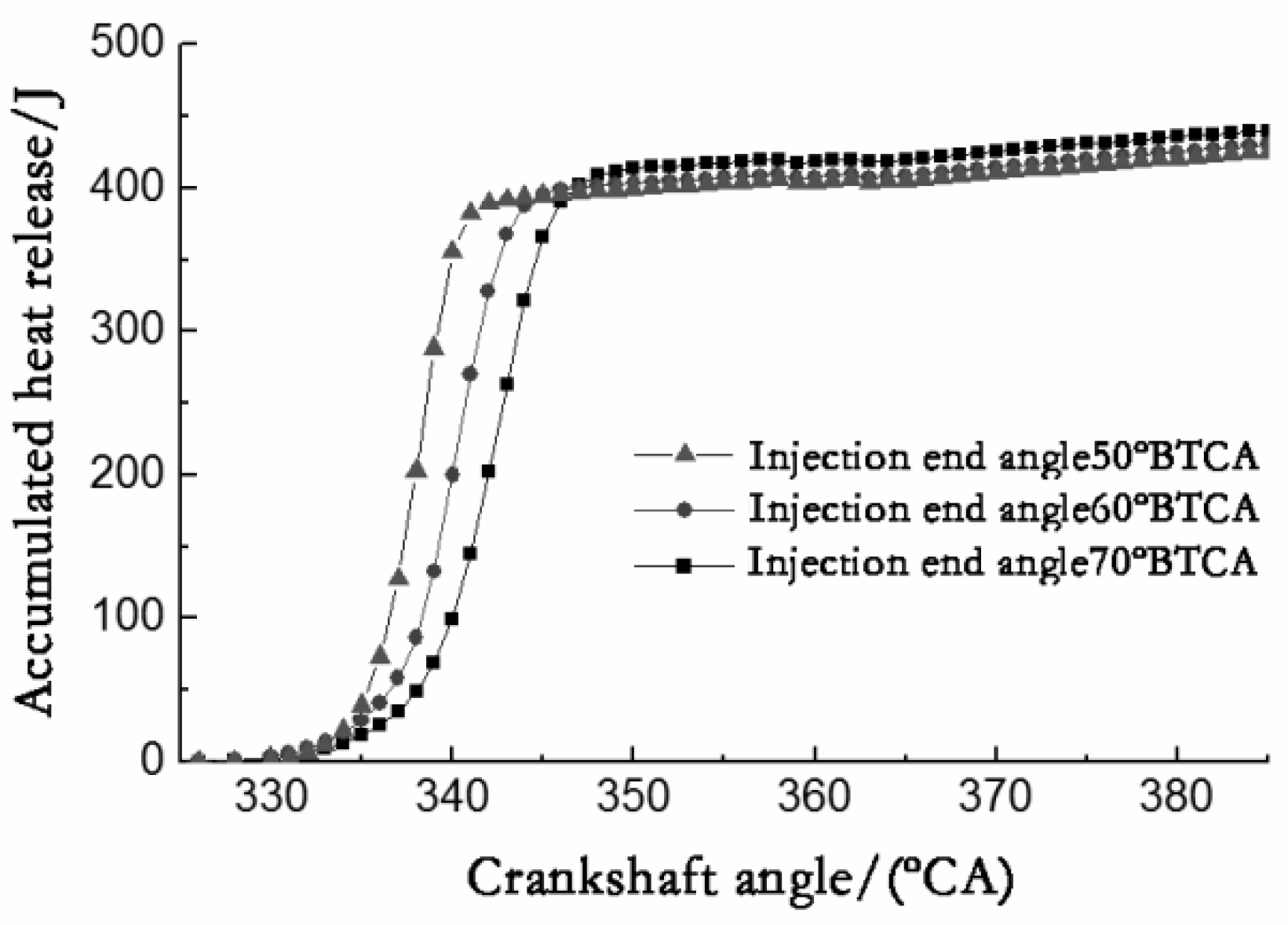
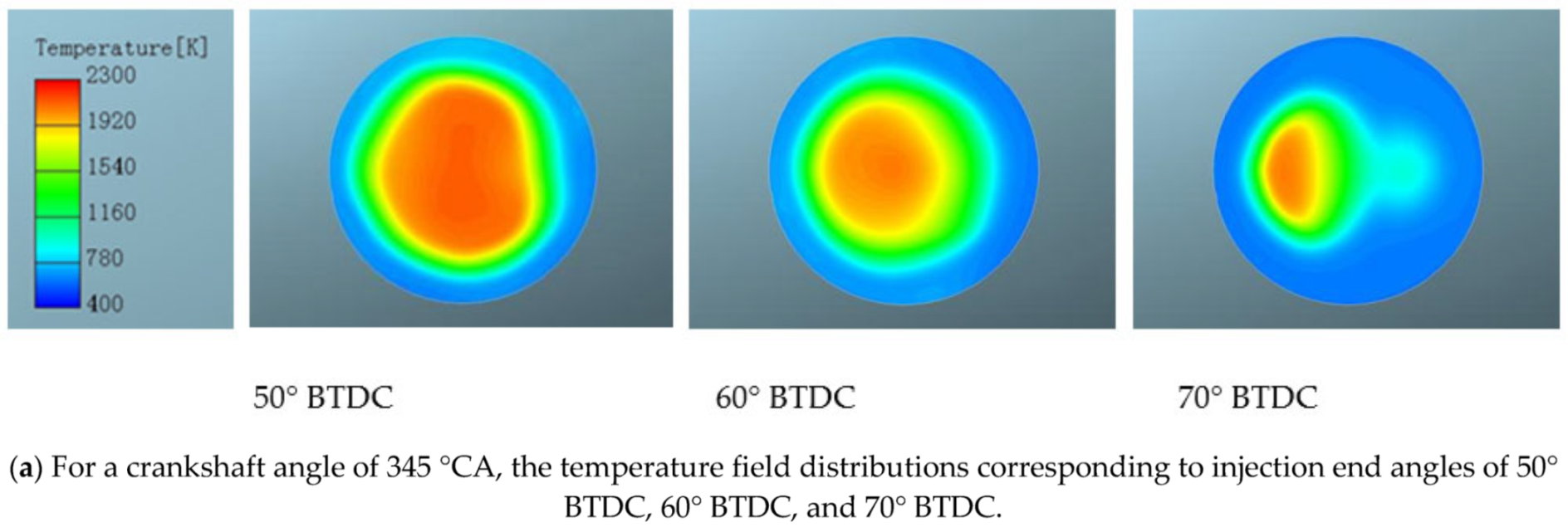
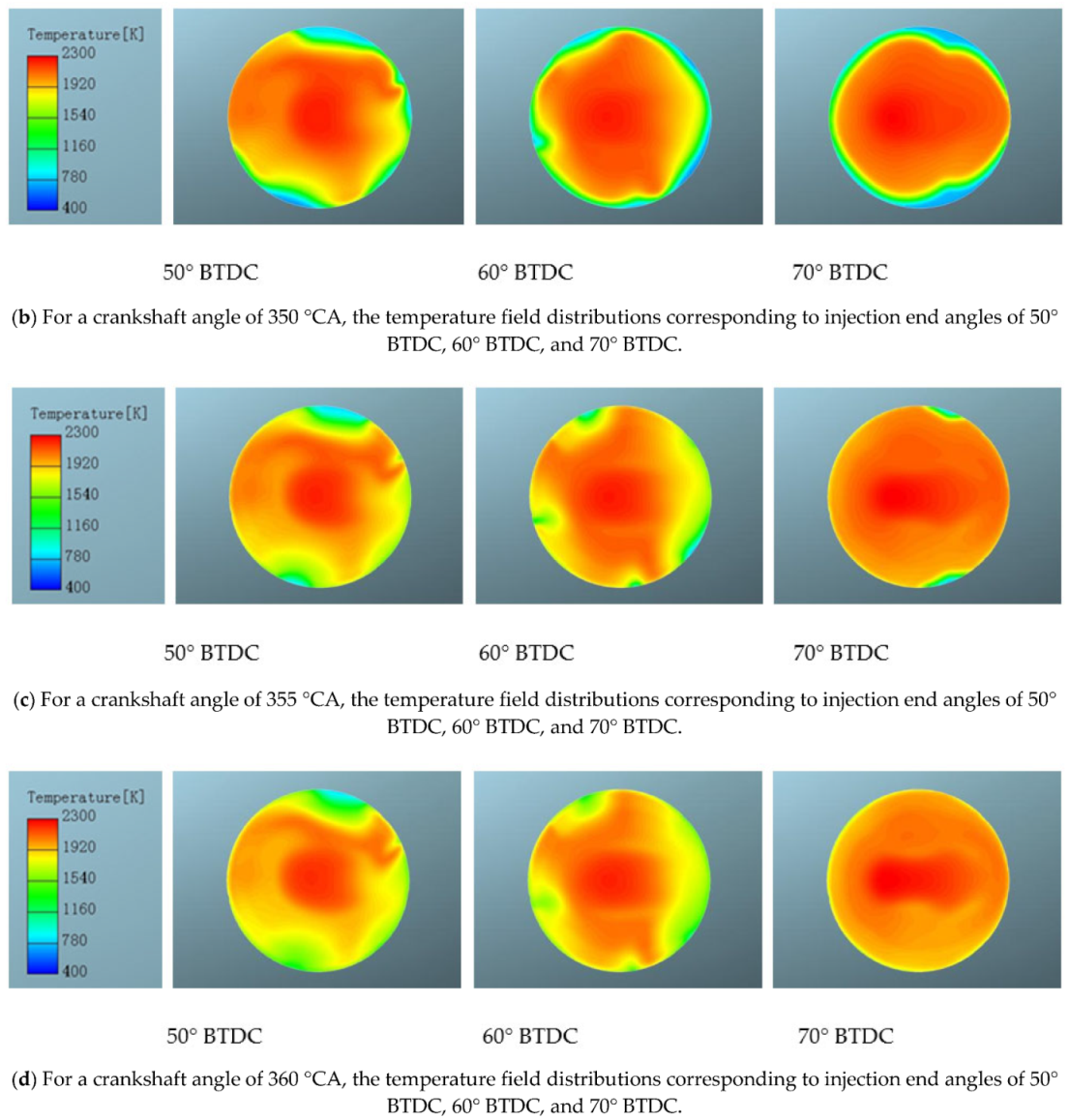

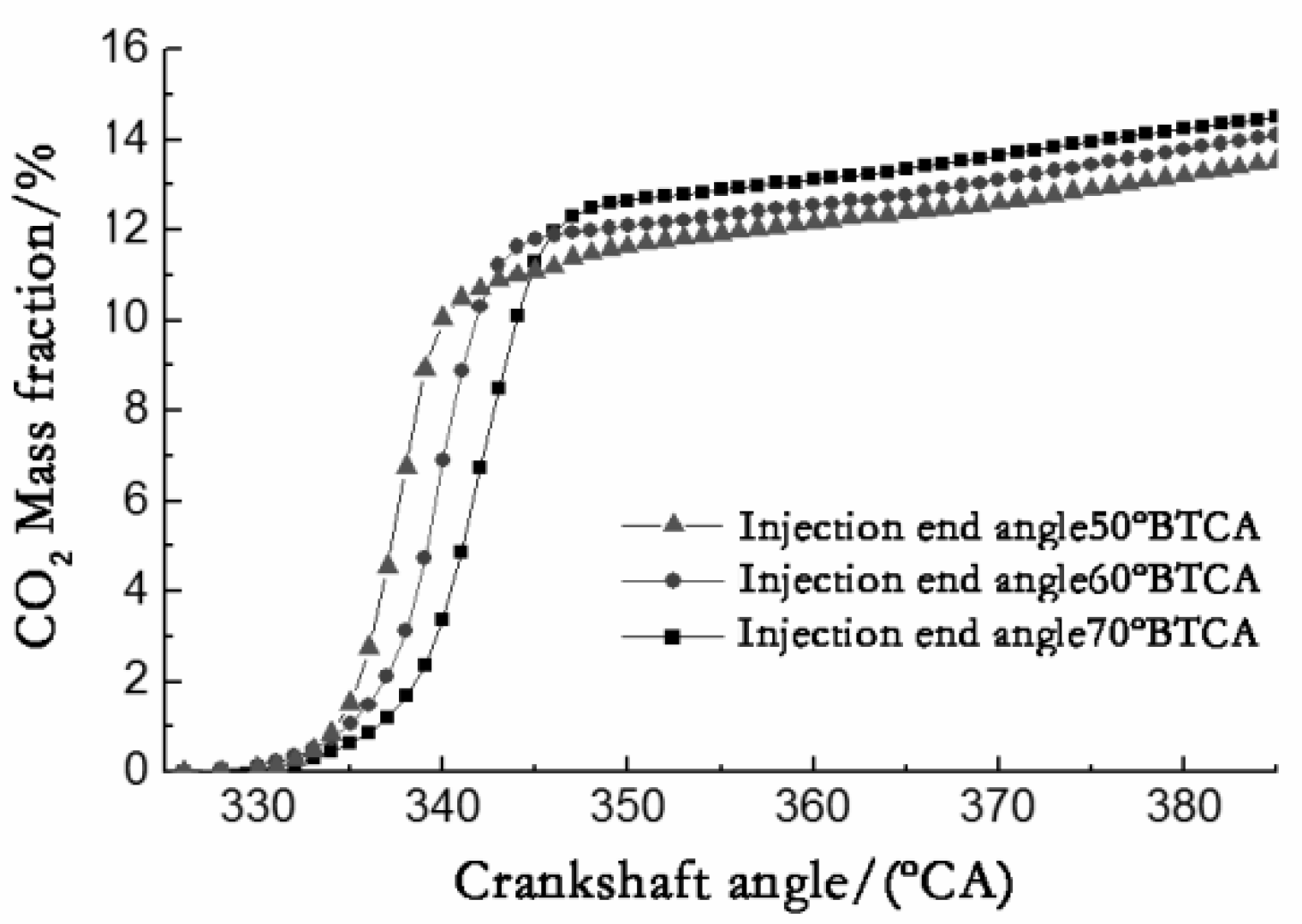
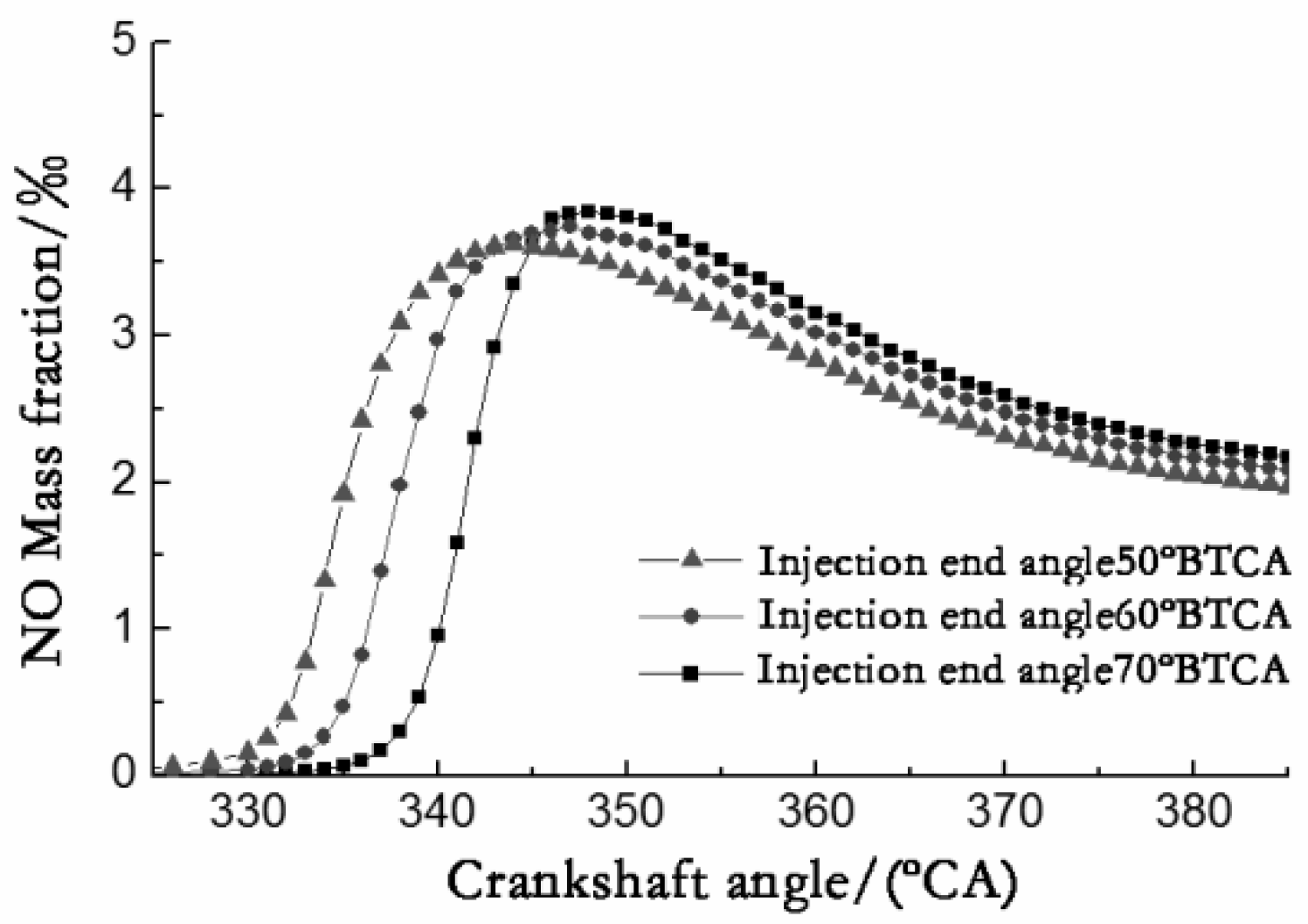
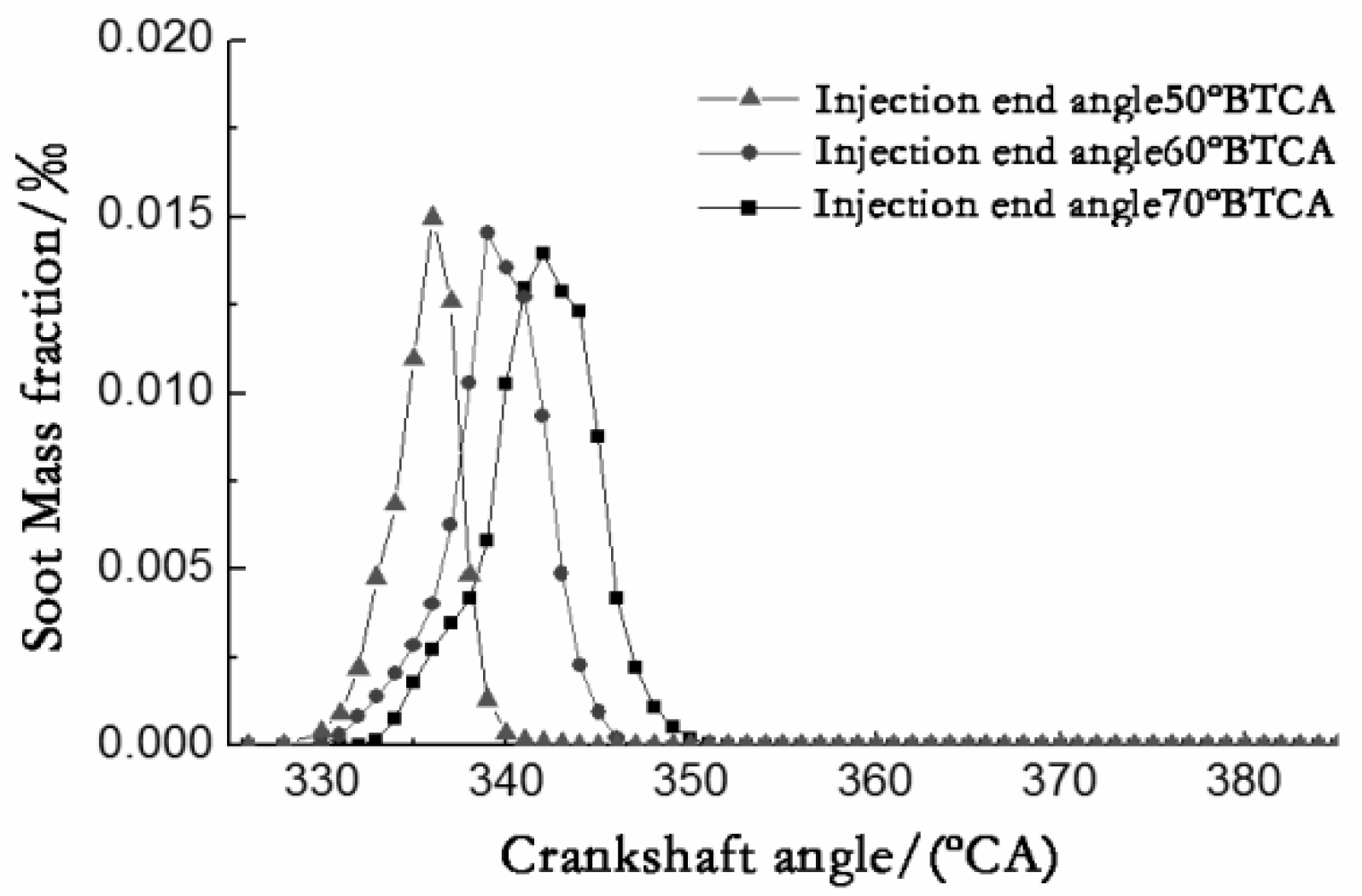

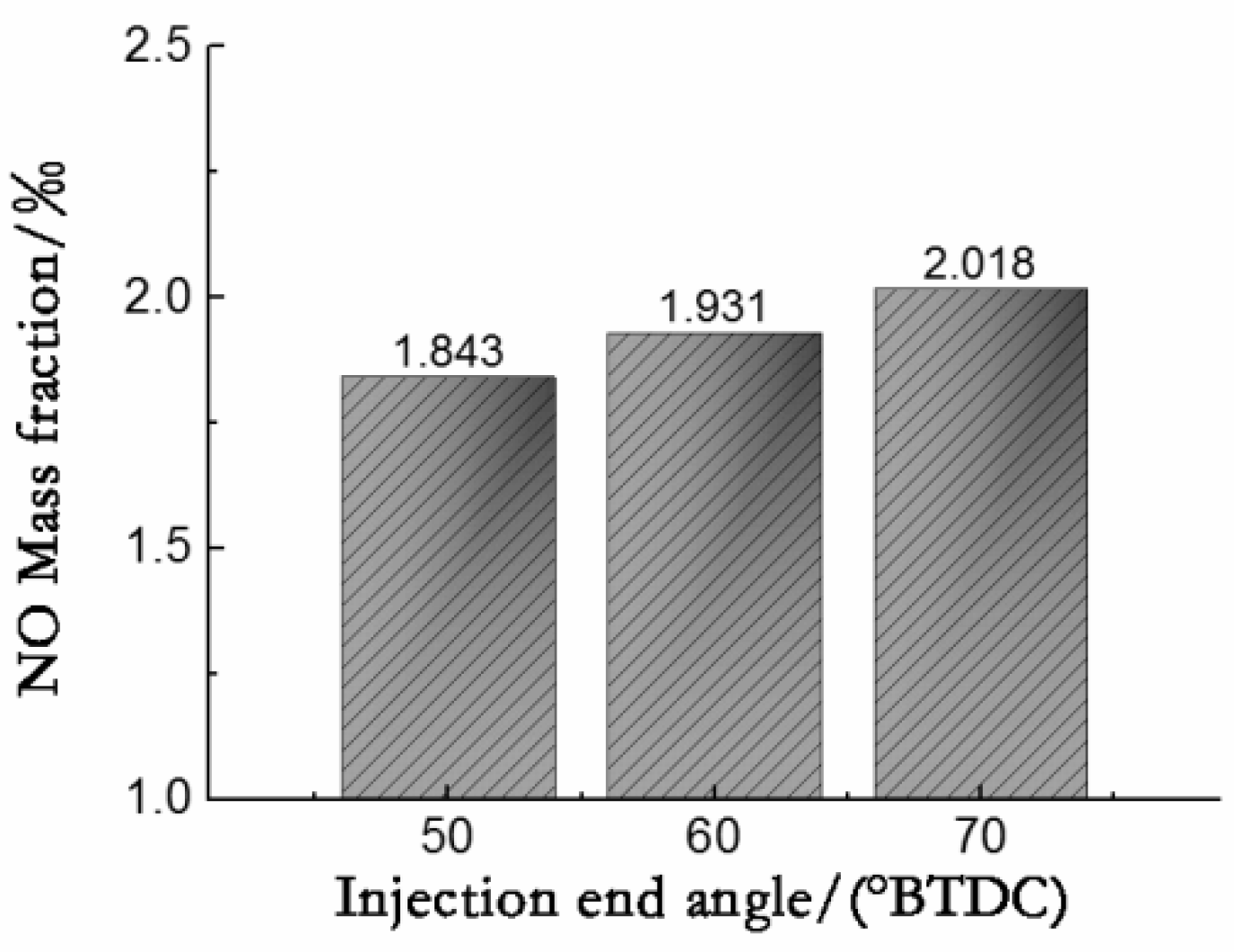
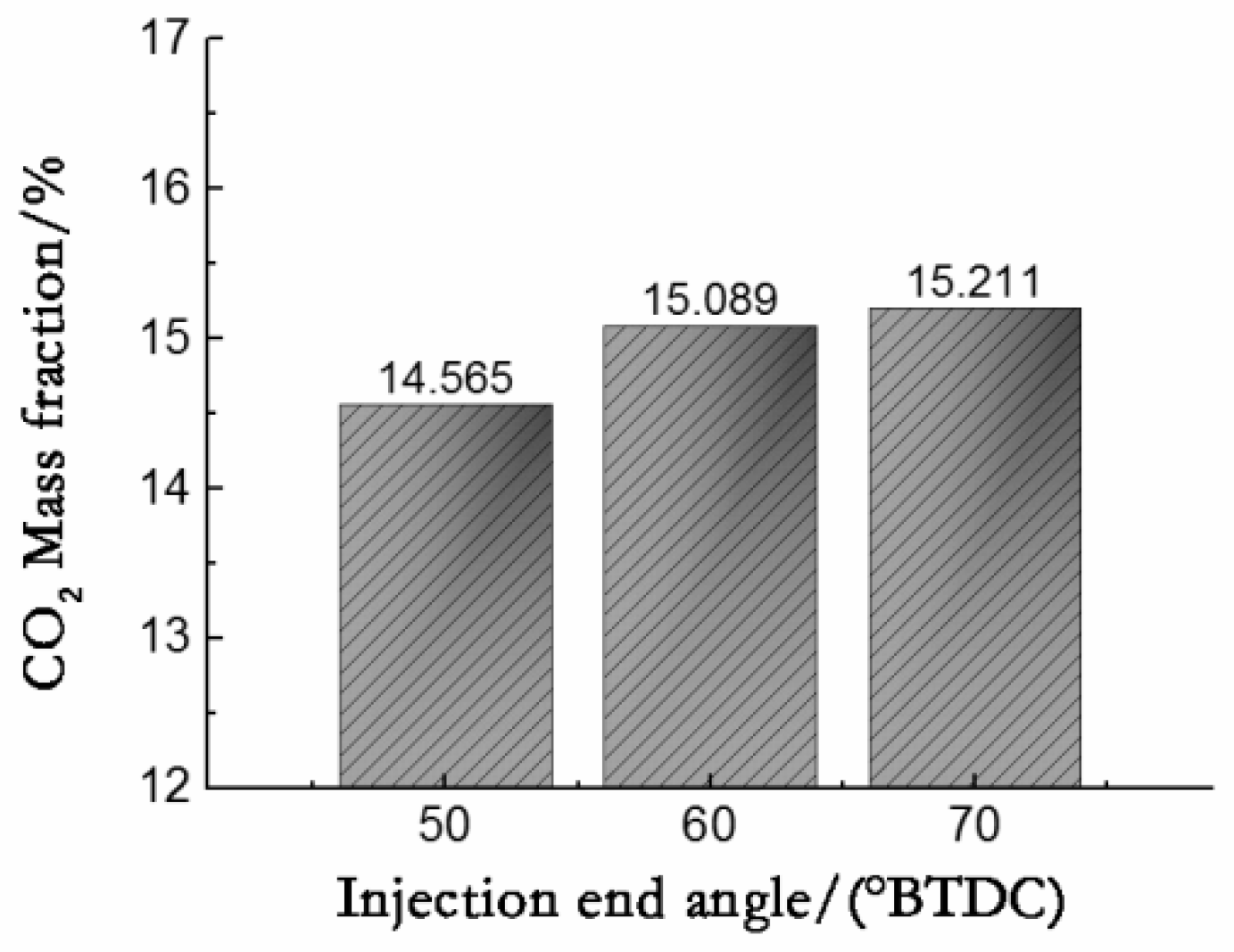
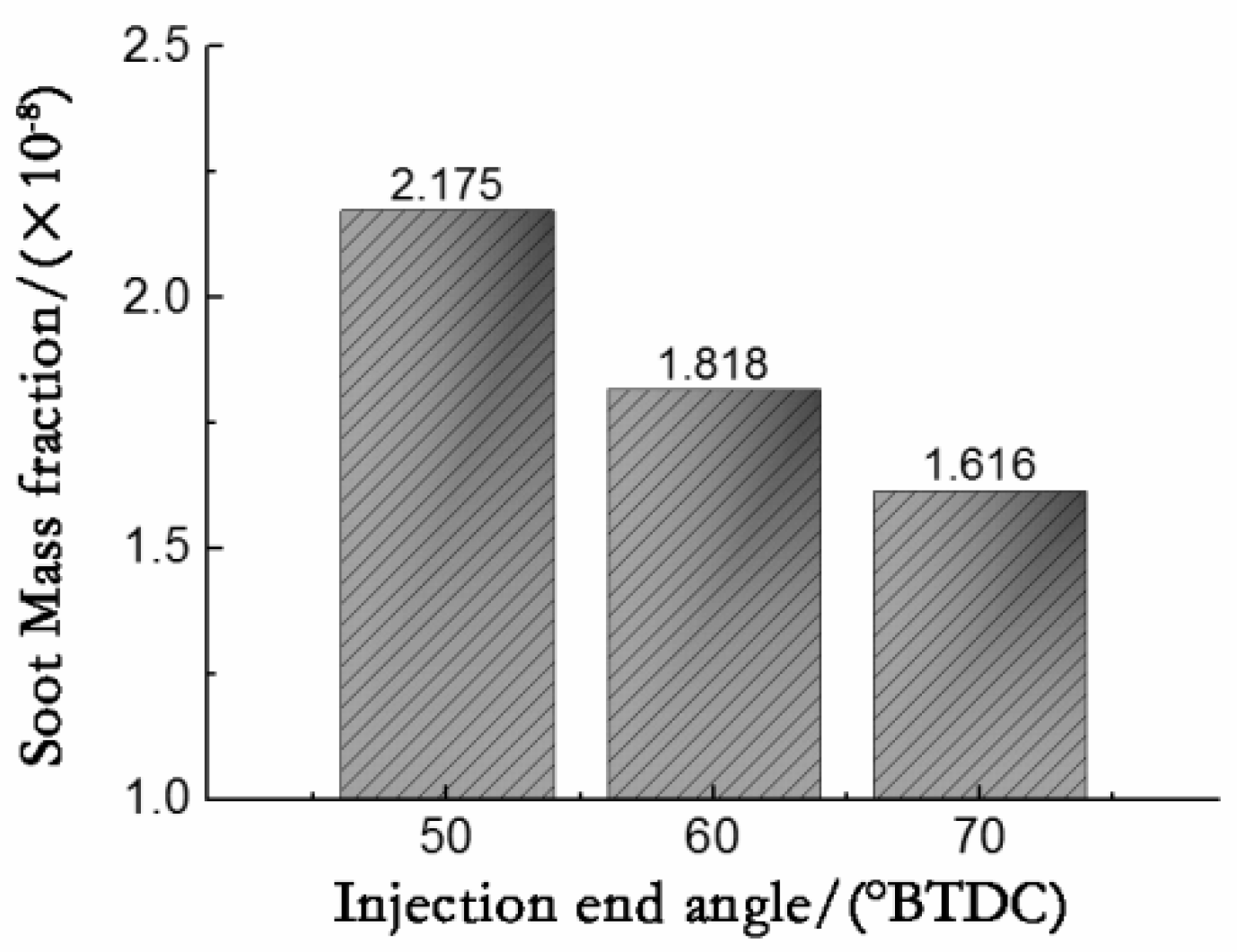
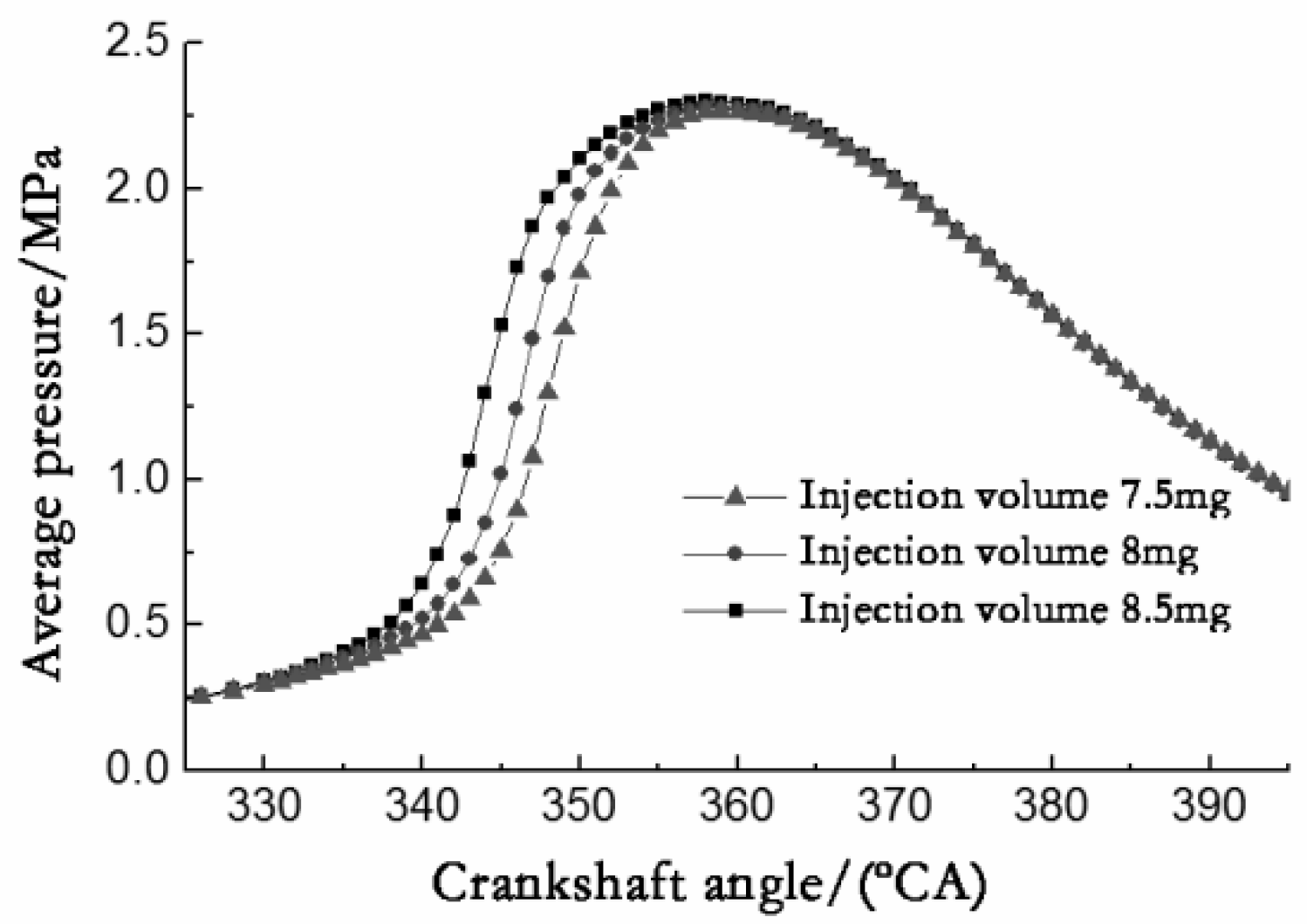
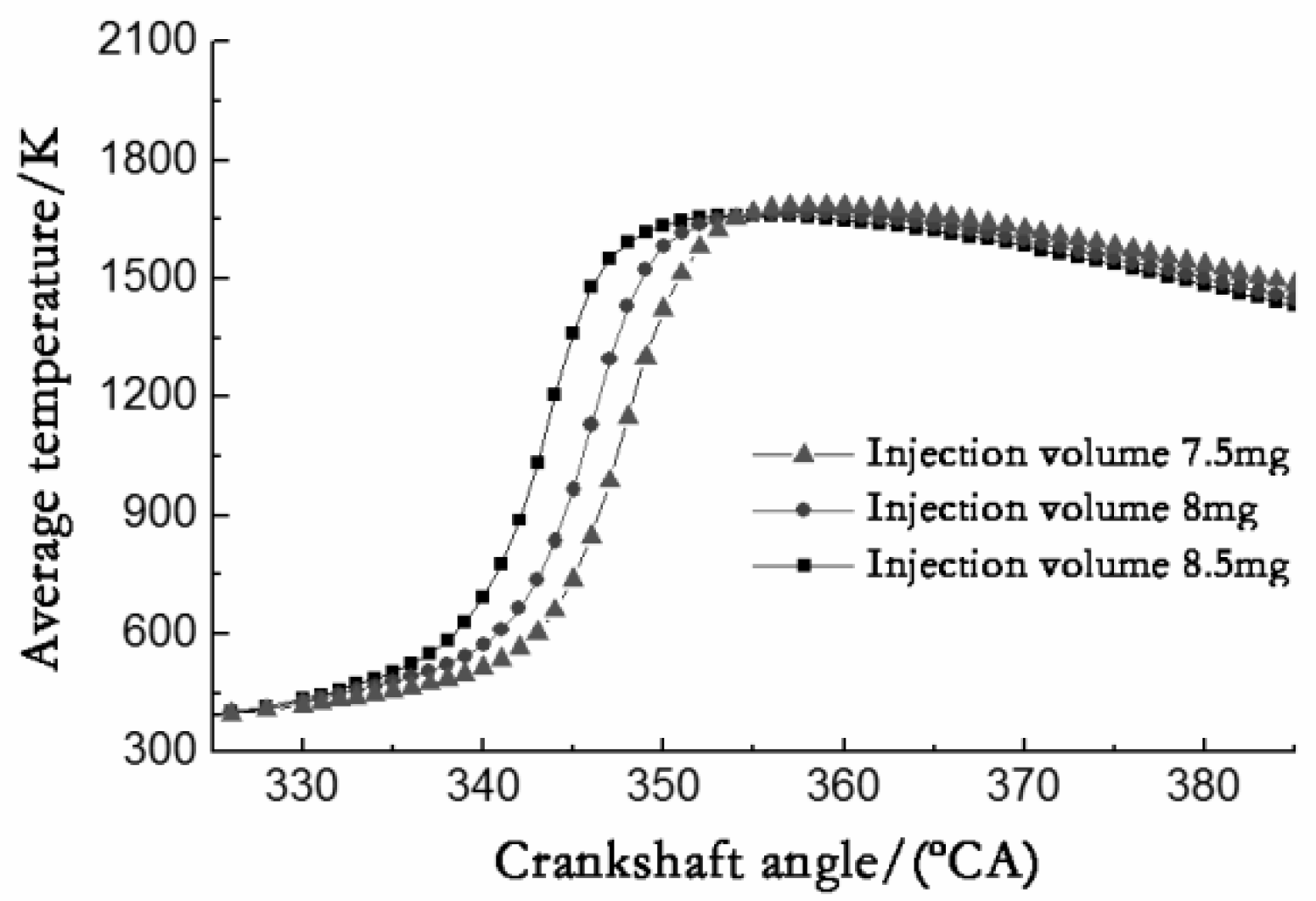
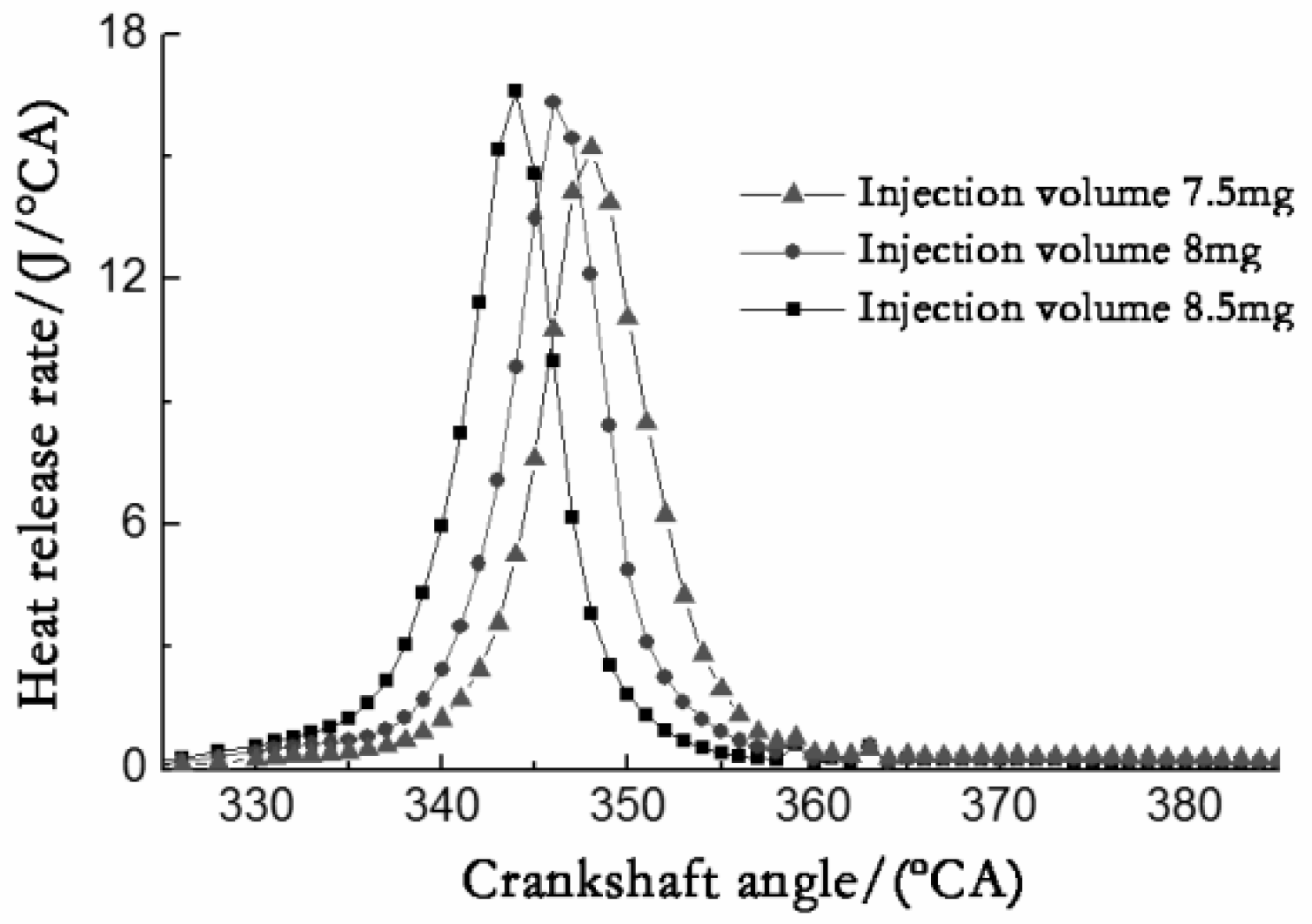

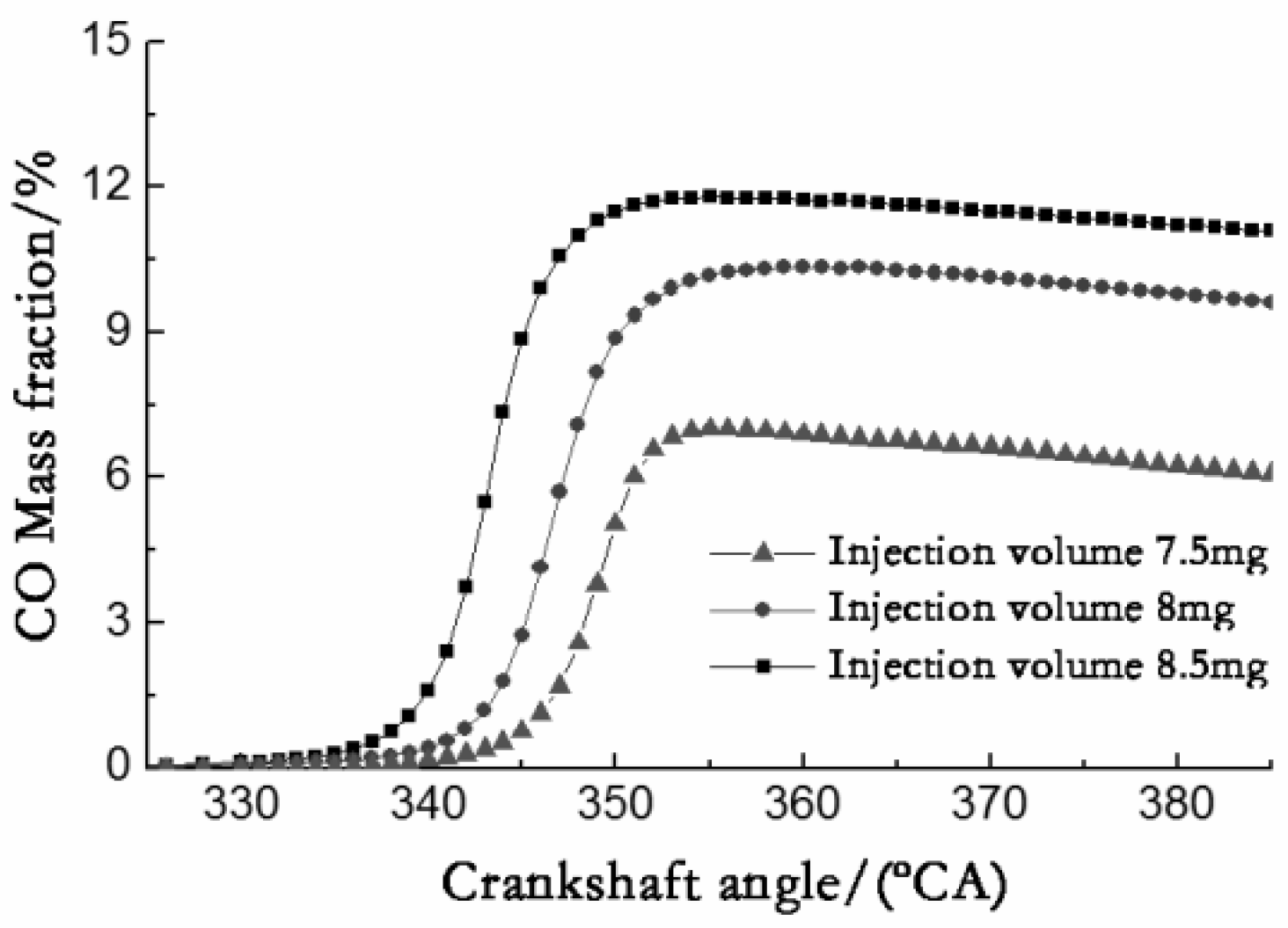
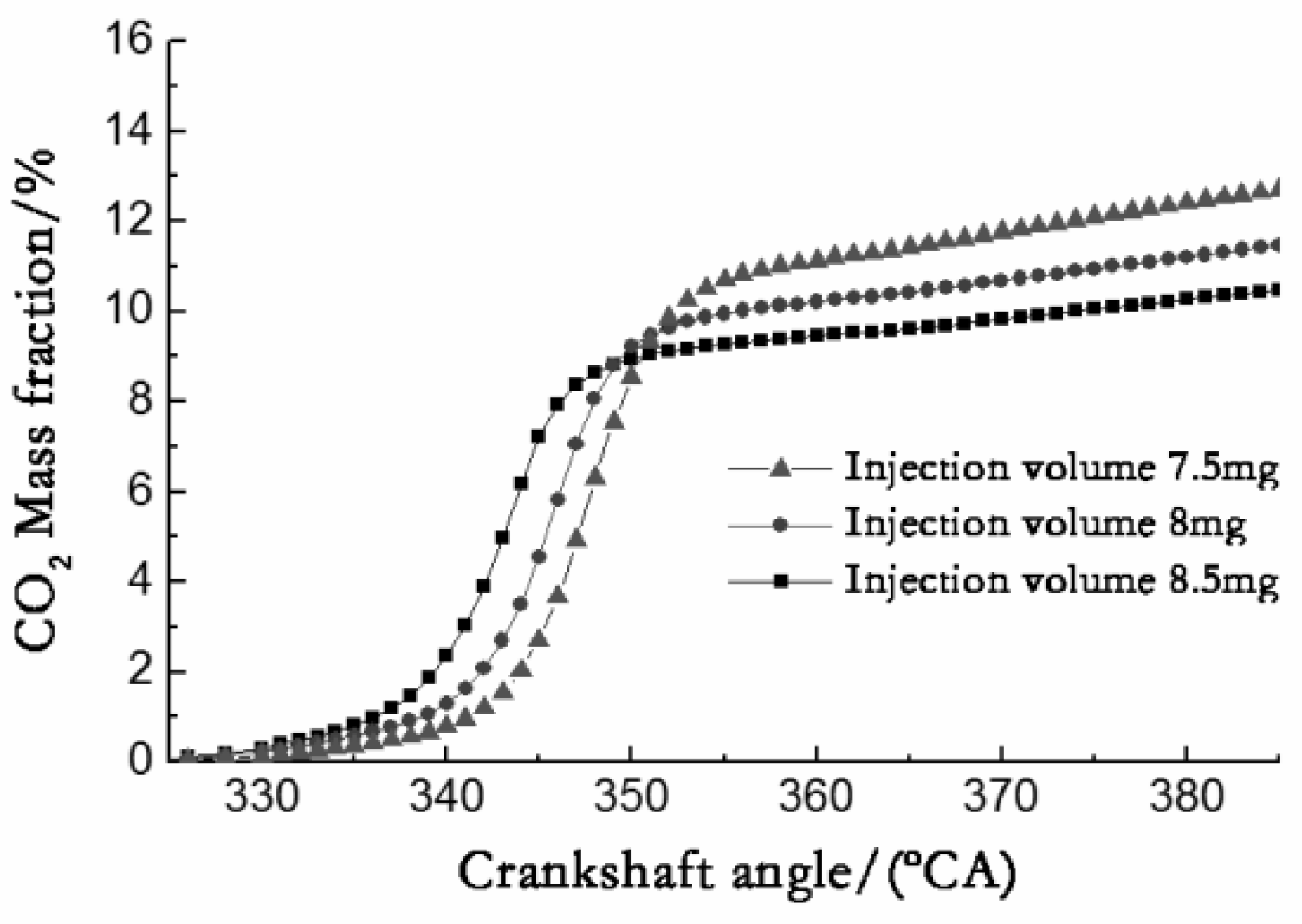
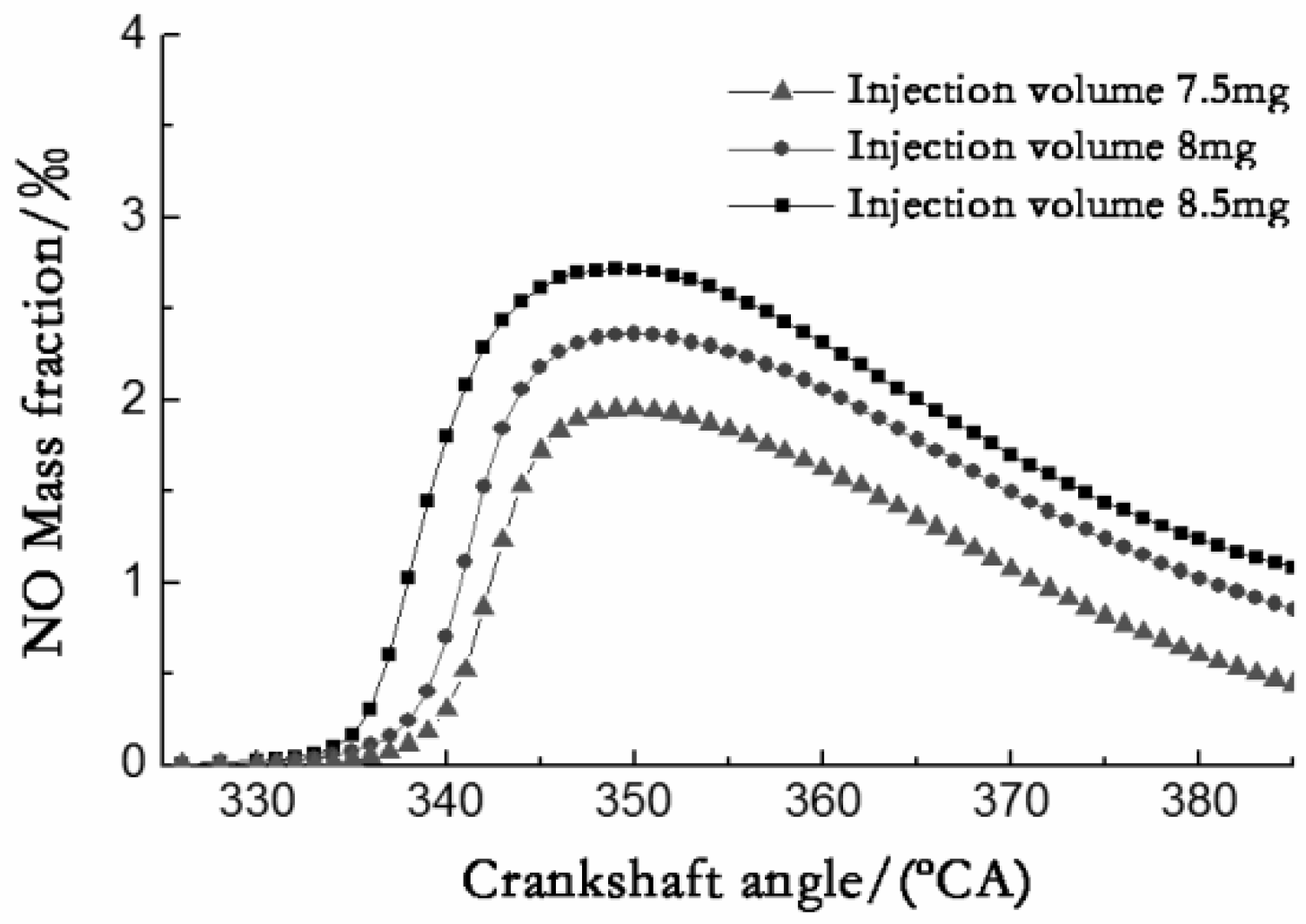
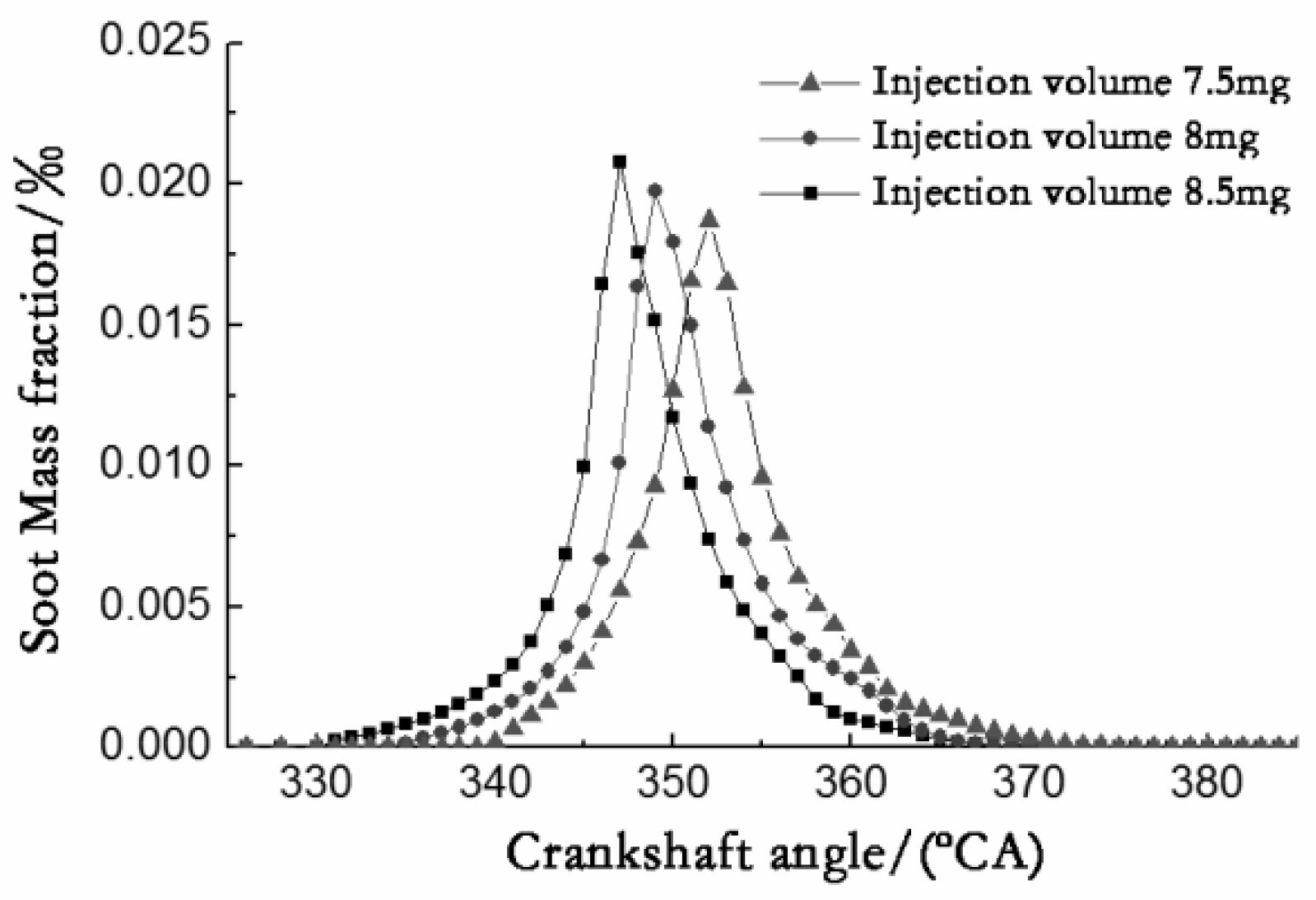
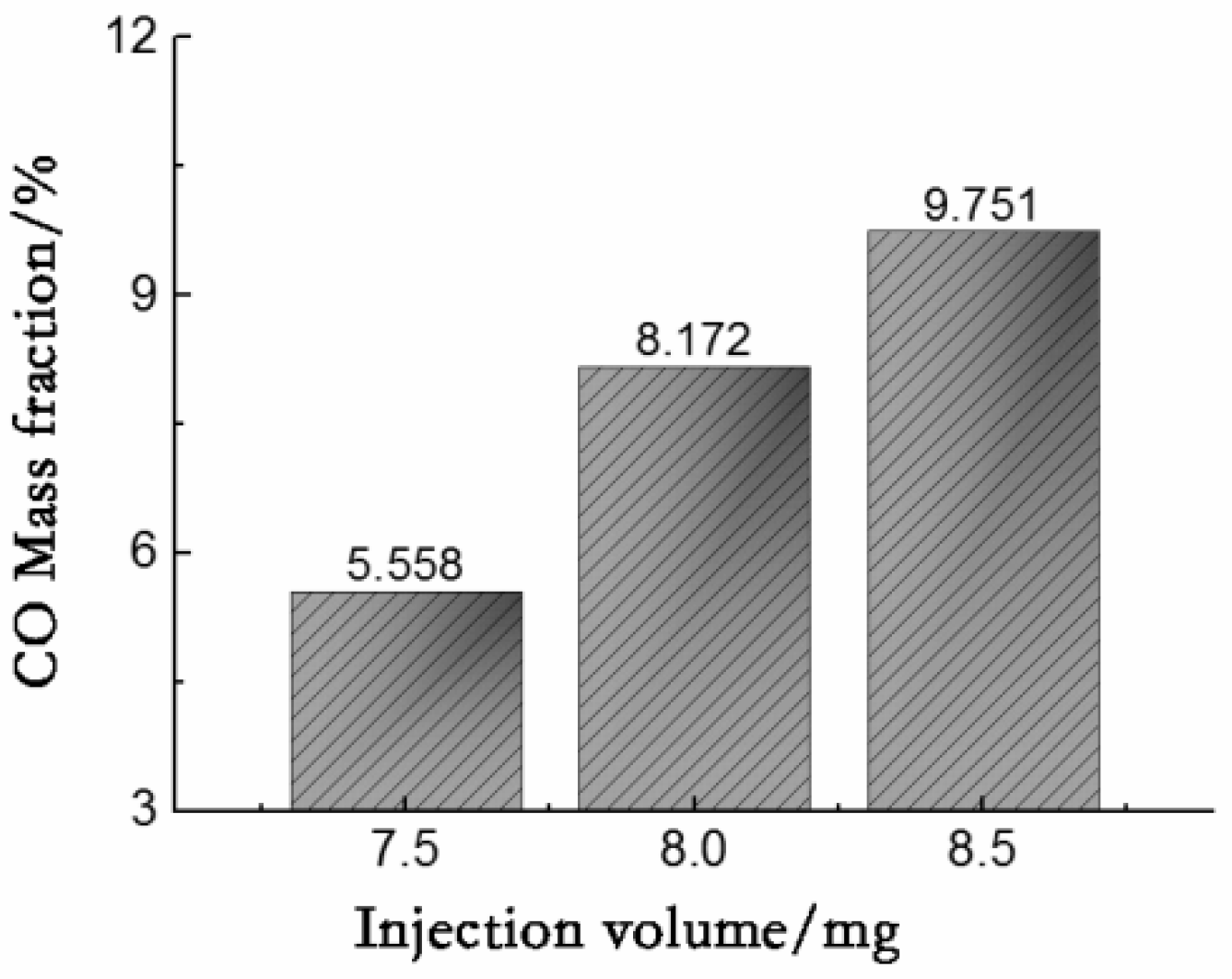
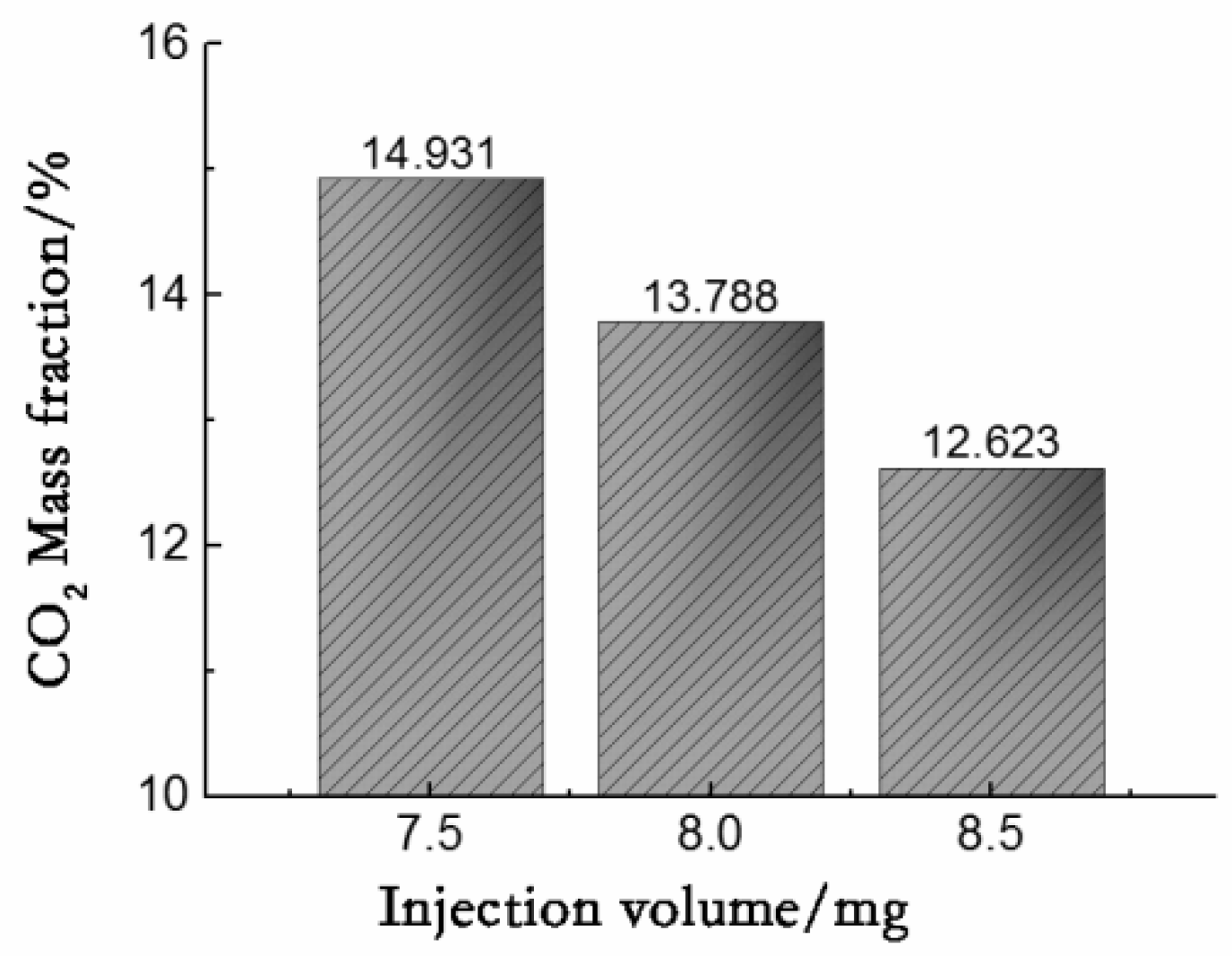
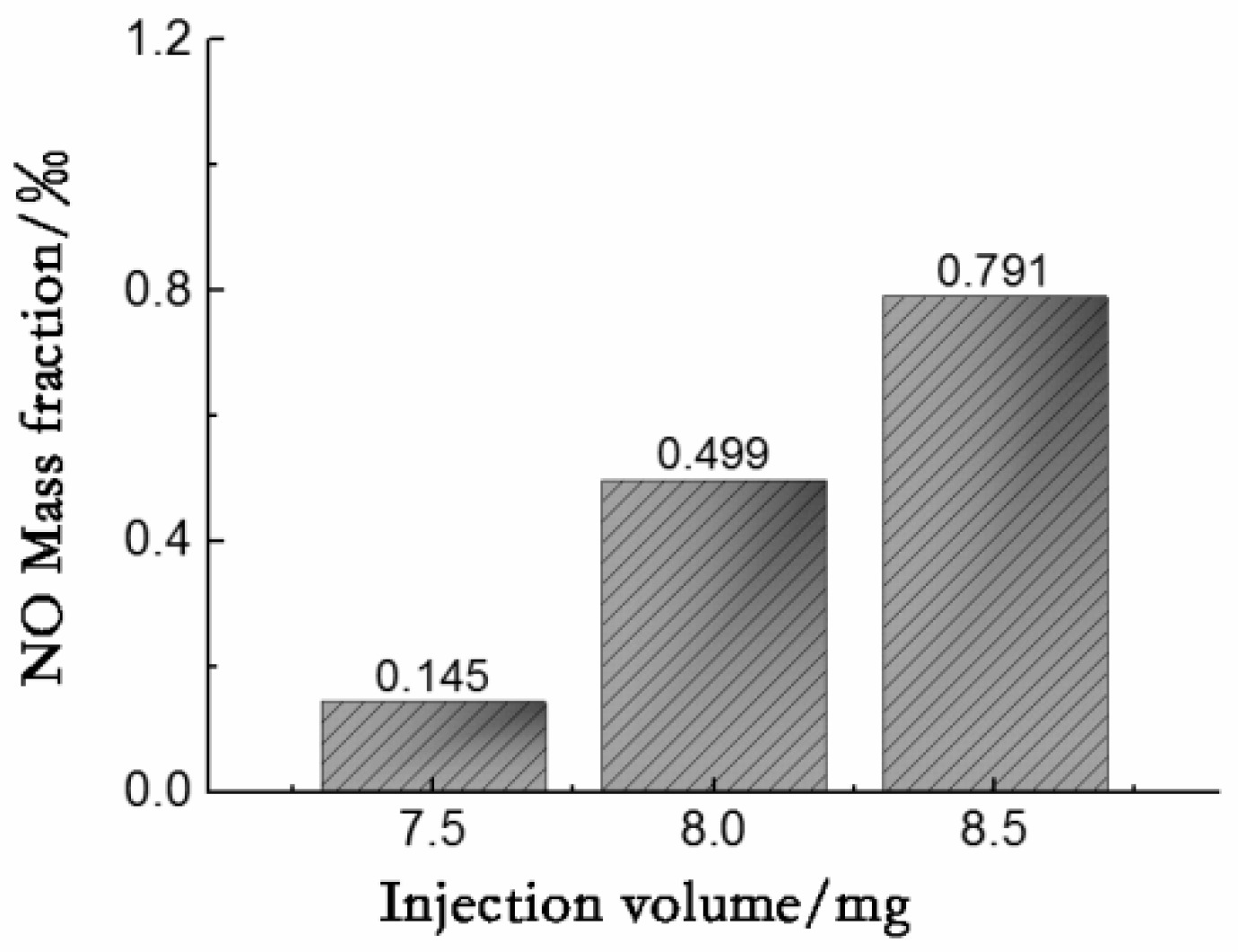

| Chemical Reaction Equation | Positive Reaction Rate Constant | Reverse Reaction Rate Constant |
|---|---|---|
| Physicochemical Properties | Gasoline | 3# Saviation Kerosene |
|---|---|---|
| Composition | C5~C11 | C7~C16 |
| Molecular weight | 114 | 141 |
| Liquid density (kg/L) | 0.70~0.75 | 0.73~0.82 |
| Solidifying point (°C) | −80 | −60 |
| Boiling point (°C) | 25~220 | 147~230 |
| Self-ignition temperature (°C) | 220~250 | 275 |
| Flashpoint (°C) | −45 | 35~51 |
| Ignition concentration limit (vol%) | 1.4~7.6 | 0.71~5.19 |
| Theoretical air-fuel ratio | 14.82 | 14.65 |
| Latent heat of vaporization (kJ/kg) | 310~350 | 353~361 |
| Lower calorific value (kJ/kg) | 44,000 | 43,350 |
| Heat value of mixture (kJ/kmol) | 84,467 | 84,423 |
| Parameter Name | Before Modification | After Modification |
|---|---|---|
| Cylinder bore (mm) | 76 | 76 |
| Stroke (mm) | 69 | 69 |
| Displacement (cm3) | 939 | 939 |
| Combustion chamber | Basin shape | Offset tub |
| Fuel | Gasoline | Kerosene |
| Actual compression ratio | 5.7 | 5.6 |
| Crankcase compression ratio | 1.45 | 1.45 |
| Scavenging mode | Reflux scavenging | Reflux scavenging |
| Ignition mode | Dual-spark plug ignition | Dual-spark plug ignition |
| Lubrication method | Separation lubrication | Separation lubrication |
Publisher’s Note: MDPI stays neutral with regard to jurisdictional claims in published maps and institutional affiliations. |
© 2022 by the authors. Licensee MDPI, Basel, Switzerland. This article is an open access article distributed under the terms and conditions of the Creative Commons Attribution (CC BY) license (https://creativecommons.org/licenses/by/4.0/).
Share and Cite
Bei, T.; Lu, B.; Liu, R.; Huang, J.; Zhang, B. Effects of Injection Timing and Injection Volume on the Combustion and Emissions of a Two-Stroke Kerosene Direct Injection Engine. Processes 2022, 10, 1728. https://doi.org/10.3390/pr10091728
Bei T, Lu B, Liu R, Huang J, Zhang B. Effects of Injection Timing and Injection Volume on the Combustion and Emissions of a Two-Stroke Kerosene Direct Injection Engine. Processes. 2022; 10(9):1728. https://doi.org/10.3390/pr10091728
Chicago/Turabian StyleBei, Taixue, Bo Lu, Rui Liu, Junhui Huang, and Bing Zhang. 2022. "Effects of Injection Timing and Injection Volume on the Combustion and Emissions of a Two-Stroke Kerosene Direct Injection Engine" Processes 10, no. 9: 1728. https://doi.org/10.3390/pr10091728
APA StyleBei, T., Lu, B., Liu, R., Huang, J., & Zhang, B. (2022). Effects of Injection Timing and Injection Volume on the Combustion and Emissions of a Two-Stroke Kerosene Direct Injection Engine. Processes, 10(9), 1728. https://doi.org/10.3390/pr10091728






